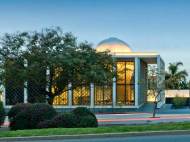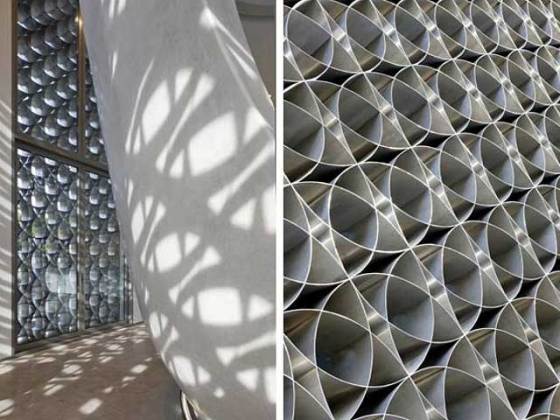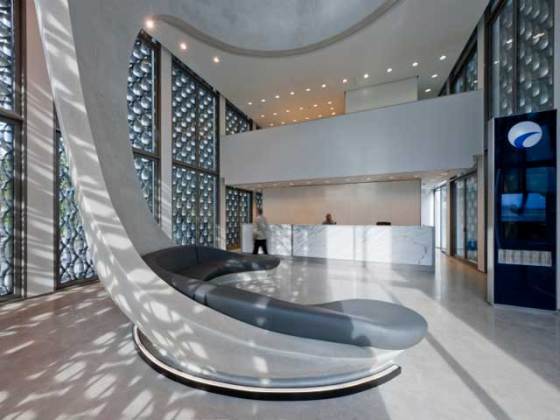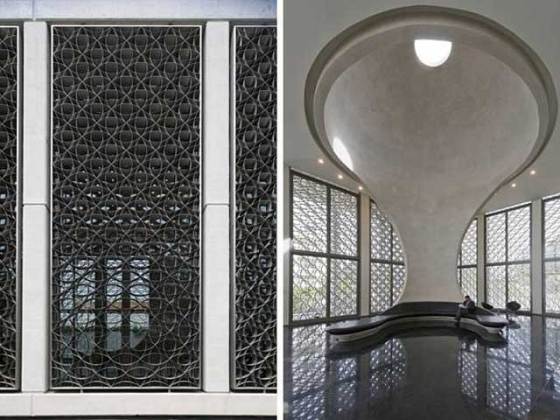Green architecture – BMCE Bank, Morocco
 The first regional headquarters branches for Moroccan bank, Banque Marocaine du Commerce Exterieur (BMCE) have opened in Rabat and Casablanca, with a further branch in Fez due to complete shortly. The banks’ contemporary interior is wrapped by a traditional, energy efficient envelope and the design is based on a modular system, which utilizes local materials and craftsmanship to create a striking new emblem for BMCE.
The first regional headquarters branches for Moroccan bank, Banque Marocaine du Commerce Exterieur (BMCE) have opened in Rabat and Casablanca, with a further branch in Fez due to complete shortly. The banks’ contemporary interior is wrapped by a traditional, energy efficient envelope and the design is based on a modular system, which utilizes local materials and craftsmanship to create a striking new emblem for BMCE.
The design, made by Foster + Partners, is made of various materials, with variations in color and scale according to the bank’s location. Each building comprises a concrete frame, with an entrance colonnade and a series of bays repeated on a modular grid.
The bays are enclosed by glazed panels and 200mm-deep (nearly 8 inches-deep) screens, which provide shade and security. The screens are cut from sheets of stainless steel – a special low-iron mixture that does not heat up in the sun – which are curved to create a geometric design, based on traditional Islamic patterns.
“The BMCE flagship branches – our first completed buildings in Africa – reinterpret elements of traditional Moroccan architecture, combining these with a contemporary interior that reflects the Bank’s progressive approach to its customers”, said Lord Foster. “This blend of ancient principles and modern technology is also reflected in an energy efficient design. The result is a series of buildings that are sustainable and each one, uniquely, of its place.”
The double-height entrance hall of each building features a bank of seating connected to the domed roof by a swooping ribbon of concrete. Offices and meeting rooms are arranged on two floors in the rest of the building.
The branches are designed to be highly energy efficient and use locally-sourced materials, such as black granite and grey limestone. All BMCE flagship branches feature an ‘earth tube’, an electricity-free cooling system: fresh air is drawn into an empty pipe that encircles the building underground, where it is naturally cooled by the earth and released into the branch.
The dome, a recurrent element in each bank, is a reference to the design of a number of new schools in Morocco, which have received philanthropic support from BMCE Bank Foundation. The interior of the dome is rendered in tadelakt, a local plaster technique, while the exterior is clad in zellige, traditional ceramic tiles. The dome form sweeps down into the banking hall to create a sculptural curved bench.












Leave your response!